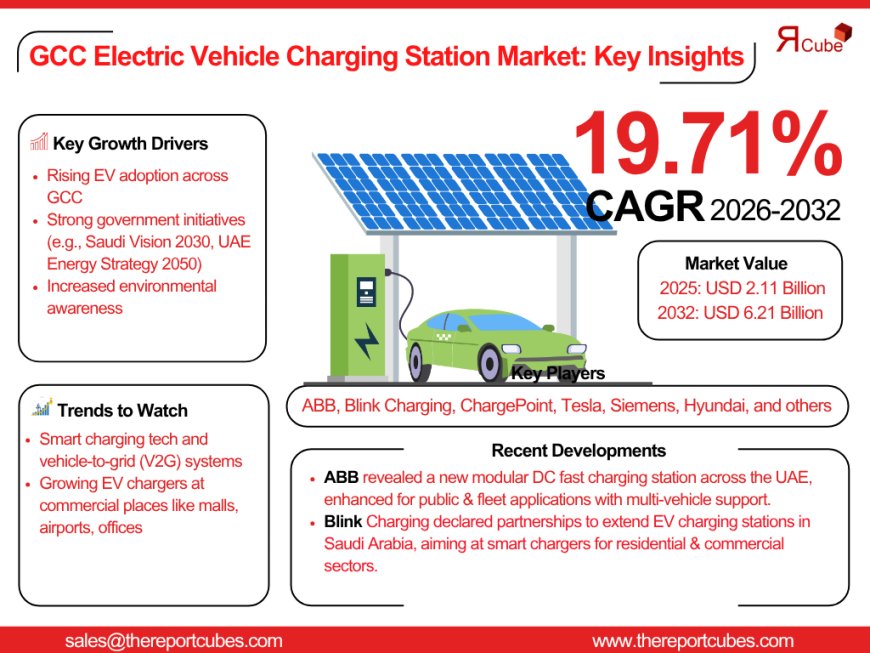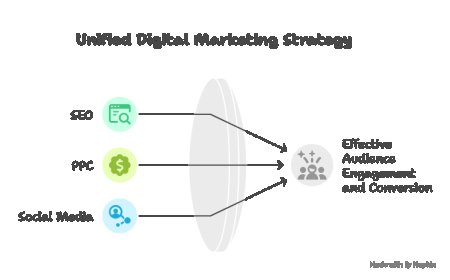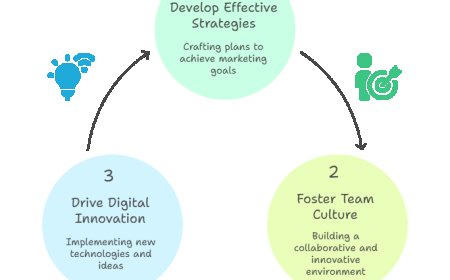GCC’s EV Charging Revolution: Government Policies & Future Projections
The GCC Electric Vehicle Charging Station Market is anticipated to register a CAGR of around 19.71% during the forecast period, 2026-32. Also, the market size was valued at nearly USD 2.11 billion in 2025 and is foreseen to witness nearly USD 6.21 billion during 2032.

GCC Electric Vehicle Charging Station Market: Powering the Future of Mobility
TheGCC Electric Vehicle Charging Station Marketis rapidly evolving, driven by the increasing adoption of electric vehicles (EVs) and government initiatives promoting sustainable transportation. According toThe Report Cubes, the market is projected to grow at aCAGR of 19.71%from 2026 to 2032, with its value expected to surge fromUSD 2.11 billion in 2025 to USD 6.21 billion by 2032. This growth highlights the region's commitment to reducing carbon emissions and transitioning toward greener mobility solutions.
In this article, we explore thekey trends, market drivers, and future outlookof the GCC EV charging station industry, helping general readers understand its significance and opportunities.
Why is the GCC EV Charging Station Market Growing?
1. Government Initiatives & Visionary Policies
Governments across theGCC (Gulf Cooperation Council), including the UAE, Saudi Arabia, and Qatar, are heavily investing in EV infrastructure. For instance:
- UAEs Green Agenda 2030aims to increase the share of clean energy in the total energy mix.
- Saudi Arabias Vision 2030includes plans to installEV charging stationsacross major cities.
- Qatars National EV Strategytargets10% EV penetration by 2030.
These policies are accelerating the demand forpublic and private EV charging stations.
2. Rising EV Adoption in the GCC
With global automakers introducingaffordable and high-performance EVs, consumers in the GCC are increasingly shifting toward electric cars. Brands likeTesla, Lucid Motors, and Hyundaiare expanding their presence, supported by incentives such as:
- Tax exemptionsfor EV buyers
- Free chargingat public stations (in some regions)
- Subsidieson EV purchases
This surge in EV sales directly fuels the need formore charging stations.
3. Investments in Smart & Fast-Charging Infrastructure
The GCC is focusing onultra-fast and smart charging solutions, including:
- DC Fast Chargers (50-350 kW) Reducing charging time to20-30 minutes
- Solar-Powered Charging Stations Promoting renewable energy integration
- IoT-Enabled Chargers Allowing remote monitoring and payments via mobile apps
Such advancements make EV ownershipmore convenient, further boosting market growth.
Market Segmentation: Understanding the Key Areas
The GCC EV charging station market can be categorized based on:
1. By Charger Type
- AC Chargers (Slow/Moderate Charging) Common in homes and workplaces.
- DC Fast Chargers (Rapid Charging) Installed in highways and commercial hubs.
2. By Application
- Public Charging Stations Located in malls, parking lots, and fuel stations.
- Private Charging Stations Installed in residential complexes and corporate offices.
3. By Country
- UAE (Dominating Market) Dubai and Abu Dhabi lead with the highest number of charging stations.
- Saudi Arabia (Fastest Growing) Major projects like NEOM and Red Sea Initiative are boosting demand.
- Qatar, Kuwait, Oman, Bahrain Gradually expanding EV infrastructure.
Challenges & Opportunities in the Market
Challenges
- High Installation Costs Setting up fast-charging stations requires significant investment.
- Grid Capacity Issues Some regions need upgrades to support widespread EV charging.
- Consumer Awareness Many drivers still hesitate due torange anxiety(fear of running out of charge).
Opportunities
- Public-Private Partnerships (PPP) Governments collaborating with companies likeEVIQ (UAE) and Electromin (KSA)to expand networks.
- Renewable Energy Integration Solar-powered stations reduce dependency on the grid.
- Subscription-Based Charging Models Offering flexible payment plans to attract more users.
Future Outlook: Whats Next for the GCC EV Charging Market?
By2032, the GCC is expected to have awell-established EV charging network, with:
?Over 100,000 charging pointsacross highways and urban centers.
?More ultra-fast charging hubsnear tourist spots and business districts.
?AI & IoT-based smart chargingfor better energy management.
Additionally,battery-swapping technology(replacing drained batteries with fully charged ones in minutes) could emerge as an alternative to traditional charging.
Conclusion: A Green Revolution on the Horizon
TheGCC Electric Vehicle Charging Station Marketis set forexponential growth, driven bygovernment support, rising EV sales, and technological advancements. With a projected market size ofUSD 6.21 billion by 2032, the region is positioning itself as a leader insustainable mobility.
For consumers, this meansmore charging options, faster refueling, and lower emissions, making EVs a practical choice. For businesses and investors, it presentslucrative opportunitiesin infrastructure development, smart technology, and renewable energy integration.
As the GCC accelerates toward azero-emission future, the EV charging industry will play apivotal rolein shaping the next era of transportation.
























